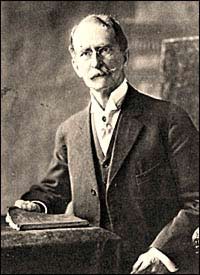



As a Hard of Hearing autistic adult, I think about this often. There are many overlaps in the autistic and Deaf communities. There are different sensory, diagnosis, difficulties and therapy experiences. There is certainly an overlap of experiences and history. Having experiences from both communities is a truly unique experience.
Combining the Deaf and autistic cultures can have an understanding of an non normative communication. Having developed a nonverbal form of communication for Deaf people. such as American Sign Language, can be applied to the autistic community as adaptive communication.
Both communities have activists that demand inclusion and rights. With the Deaf President Now movement, the Deaf community gained a lot of momentum. The autistic community needs a similar event.
Oralism
Oralism in the Deaf Community
Oralism is the belief that Deaf people should be educated through lipreading, mimicking mouth shapes and practicing breathing patterns, and vocal exercises to help Deaf people produce oral speech. This is referred to the oral method. The people who support this believe that it is important for deaf people to assimilate into the “hearing” world. They believe that deaf people should know how to talk with hearing people. They believe it would be harder for the deaf individual to have a barrier, even though there already was one. A delegation of hearing educators voted to mandate oral only approach to educating Deaf students. The goal was to “normalize” Deaf children through the use of speech, while ousting sign language in the process. .
The oralism movement that originated more than a century ago subjected multiple generations of Deaf people to mostly unsuccessful efforts to assimilate completely into hearing society through the use of spoken language and auditory aids.
History of Oralism
In 1880, there was the Milan based Second International Congress on the Education of the Deaf. This congress was the cause of the rise of oralism. They cemented the legislative and psychological power that hearing professionals were to have over Deaf people over the next century. It was influenced by the theory and belief that sign language is primitive and detrimental to evolution and higher thinking.
In the 1880’s, there was a debate on whether sign language or the oral method in Deaf schools. Even though it would be easier for hearing people to understand deaf people through oralism, Deaf people would not be able to communicate with each other easily at all. There were more oral schools than schools that taught sign language during this time.
Decades after Milan, oralism was the prominent instructional method in Deaf schools in America. Many Deaf teachers were reassigned from academic to vocational classes. Deaf administrators were replaced by hearing administrators who had the goal of attempting to integrate Deaf students into society by teaching them spoken English.
The students that signed in class faced psychological or physical punishment. This included having hands hit with rulers, tapped the desk or tied their hands behind their backs.
 |
In 1864, Gallaudet University, the first all Deaf university in the world, was under a large opposition. Gallaudet University was the first university where ASL is the main language used. One of the largest opponents was Alexander Graham Bell.
Bell played a central role in American deaf education and was heavily influenced by his parents. His father was a elocutionist who was dedicated to improve speech articulation. His mother was Heard of Hearing. Bell believed that the oral method was the future of instruction of the deaf in the United States. Bell invented several devices to help his mother hear. One of these devices made vibrations of speech was the telephone. He said that sign language jeopardized deaf peoples potential to integrate into hearing society.
Gallaudet University was very resilient under the administration of this first superintendent Edward Miner Gallaudet.
 |
Oralism in the Autistic Community
Oralism is applied to autistic people as well. There are many non verbal autistics and autistics with language processing disorders that spend countless hours in speech therapy and do not speak. Some speech therapists (not all) do tell parents not to use signs because it would delay their speech.
ABA is also used to get an autistic child to speak. ABA can sometimes add up to 40 hours a week! There are some parents who use forms of quackery to say it will help their child speak. ASL is normally frowned upon because it is different than speech.
ASL does not delay language and speech development. ASL (I am in the United States so I will be speaking about ASL even though I know there are many sign languages throughout the world) develops language skills and relieves the frustration for the person not being able to communicate orally.
I started teaching my children to sign before speech. The area of the brain that is responsible for language develops faster than the area for speech. My children were able to sign when they were babies. This is the premise for baby sign language. Instead of modifying the signs, I used ASL because thats what I know.
Psychological Effects of Oralism
For Deaf people, oralism is not a natural form of communication. No technology intervention makes it possible for Deaf people to hear in teh same way that glasses enable most people to have 20/20 vision. The oral method takes years of intensive therapy. There are no reliable predictors of success. Exposure to language only happens through Auditory Verbal Therapy (AVT). There is no natural process of development through observation and play with peers, family members and others in daily situations.
Oralism has risks of a substantial delays in language acquisition. Parents are often not informed about this. For every child who appears to be succeeding, there are countless other children who are falling farther behind every day. The critical period of language acquisition occurs during the first few years of life. If a Deaf child does not acquire fluency and a foundation of spoken English before this period ends, most don’t, there are psychological effects of linguistic deprivation will be apparent.
Oralism supporters often think of sign language as a backup plan. By the time parents recognize and accept that their child is not making sufficient progress with an oral only approach, the critical language period has ended.
When the child is finally allowed to learn ASL, research shows that the level of fluency will not be the same as a native signer. Deaf children who begin learning ASL from birth or during the first few years of life show greater fluency in reading and writing English than children only trained orally. The harm from oralism can be painful. Some critics label oralism as abuse.
Social Development
Oral Deaf children who are delayed in language development also face delays in social skill development. Jean Piaget, the noted developmental psychologist, stressed the importance of language in enabling children to navigate and function more effectively within social groups. Insufficient language exposure results in missed opportunities for social learning through observation and overhearing conversations at both home and in the community. A large percentage of Deaf children don’t acquire sufficient social skills because they do not have access to learning in their families. A shared experience among many oral Deaf people is the dinner table syndrome, which is being left out of hearing family members conversations during meals. When the Deaf child asks for an explanation or for something to be repeated, they are met with dismissive remarks or that it will be explained later. It is never explained later. This instills feelings of rejection, frustration, and causes the Deaf family member to leave the table early and retreat to another area in the house. They often avoid family members due to this.
Other Psychological Effects
Oralism’s impact on psychological wellness is vast. The ongoing pressure to learn to speak and lip read perfectly, the constant failure to do so, and the humiliation and frustration severely effects the child’s self esteem. The parent child relationship suffers when the child feels like a disappointment. Some relationships suffer when the child wants to sign instead of speak but the parents discourage or forbid it. Parents of oral Deaf children can become overprotective as they attempt to smooth the way for their children, much like martyr autism parents. This only stunts the child’s development of independence adn self confidence but also fosters anxiety. Oral Deaf children spend years suppressing feelings of rage, sadness and angst in order to survive the oppression, much like autistic masking. It is mentally draining to face hidden and overt discrimination on a daily basis. This is in addition to marginalization in society. Anti social behaviors can develop as a result from the isolation and lack of access to communication. The same can be said about autistic children who are being forced to speak when there are alternative methods of communication.
Oral Deaf children who remain oral may deny or detach from their Deaf identity. They may appear psychologically well adjusted on the outside, the suppression of their identity can have dire consequences. This is also true for autistic children who are forced to mask and are deprived of their autistic identity.
If not Oralism, then what?
For a long time, the primary approach to language was teaching by using sign language. This philosophy is called manualism. This approach was challenged by oralism. Oralism often apposed sign language as it was viewed as a barrier to acquiring speech. The debate goes beyond language and education to incorporate social, economic and political.
Manualism
Over time, there was finally the recognition that Deaf people make up the Deaf community. It shares a language, sign language with its own grammar and syntax, cultural norms, values, and history. It has highlighted the need for a new social perspective on Deafness that is different than the medical view. This is much like the social and medical model of autism and other disability. The social model is signified by Deaf and the medical model is signified by deaf.
In the 1970’s, many Deaf schools favored manualism over oralism. This was in response to different social conditions. The consistent feature of the education system was that Deaf and hard of hearing children could interact with their peers. This supports the development of the Deaf community. This fostered the growth of sign language, regardless of the philosophy of the school.
History of ASL
American Sign Language has roots in French Sign Language. It is deeply influenced by many events preceding the more formalized sign language that grew in the 1700’s. The most prominent event was the publication of “Sign Language Structure” in 1965 by William Stokoe, a linguist, showing ASL as an actual language.
The first book on sign language was published in 1620 by Juan Pablo de Bonet. It was a treaty for teaching “mute people to speak,” Bonet’s book also published a manual alphabet to improve communication with Deaf students.
In 1755, Abbe Charles-Michel de I’Epee founded the first free school in Paris for Deaf students. Many of his disciples founded schools for Deaf students in their respective countries throughout Europe using French Sign Language (LSF).
When in Paris learning the teaching methods using LSF, Gallaudet asked Laurent Clerc, Deaf teacher who also a graduate of the school, to come to America and help him set up a school for Deaf students. Clerc accepted his invitation. During the 60 days of sailing to America, Gallaudet taught Clerc English while Clerk taught Gallaudet LSF.
In 1817, Galludet and Clerc opened thier first school in Conneticut. It was called teh Conneticut Asylum for Education and Instruction of Deaf and Dumb Persons ( now its called the American School for the Deaf) in Hartford. At the end of the first year, there were 31 students from different New England cities. This included students from Martha’s Vineyard, MA and Henniker, NH.
Martha’s Vin yard and Henniker were two communities where Deaf and Hearing residents were communicating in their own sign language. “Among the possible sources of the present American Sign Language would be Clerc’s LSF, the homesigns students brought from home and from scattered Deaf communities, pantomime and new signs generated in settings of the school.”
Today’s ASL was strongly influenced by American School for the Deaf. Deaf students who graduated would go to different states to set up new schools for Deaf students and would pass down the next generation of Deaf student the “contact language” that became today’s ASL.
The ASL used today is a result of 195 years of Deaf families and students passing down from one generation to the next language that has become one of the most used languages in the United States.
Total Communication
Total communication (TC) is the philosophy of educating children who are Deaf or hard of hearing that incorporates all means of communication, formal signs, natural gestures, fingerspelling, body language, listening, lipreading and speech. Children who are in TC programs typically wear hearing aids. The goal of total communication is to optimize language development whichever is the most effective for the child. Total communication is truly philosophy not a methodology. The implementation of TC with one child may look different than another.
The core of TC encourages to use whatever communication tools are most effective for the individual child. It really depends on the child’s needs. The intent of total communication was to provide each child with the communication tools needed for that child to develop language competence. This should continue to be the goal of every teacher of every child.
If TC Was Used for Autistic Children
If this philosophy was used with autistic children, the autistic child will be more well adjusted. The child would be able to express what they need to say. They would not be frustrated. There would be less meltdowns. Their autonomy would be respected and there would be less mental health issues as a result. This would eliminate the “need” for ABA. More teachers and parents need to take this approach.
To much emphasis is put on speech with autistic children. The sensation of the vocal cords vibrating could be overwhelming can cause sensory overload. The sound of speech can also be overwhelming and cause sensory overload. Allowing the autistic child to find the method of communication that they are comfortable with would allow the autistic child mental wellness.
Sources:
https://oralismandthedeafcommunity.weebly.com/what-is-oralism.html
https://onlineexhibits.library.yale.edu/s/deaf-culture/page/communication
http://gupress.gallaudet.edu/excerpts/LPR.pdf
https://www.dawnsign.com/news-detail/history-of-american-sign-language




THANK YOU for writing this and sharing this. I had no idea about the oral schools. What a bunch of ableist abuse. Why are parents afraid to change and adapt? Why do they put this all on the child and justify it as 'best interest?' Hearing parents are obligated to support and parent their child how the child needs – demanding the child adjust for their ableism and privilege is gross. Every horrible disability 'therapy' I've seen always lists the parents justifications for the child's best interest, and it's not. It's for the parents ableism and comfort zone. Parents, learn ASL and stop the bs.
LikeLike